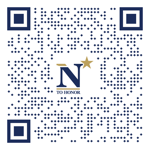CHARLES E. BROWN, ENS, USN
Charles Brown '67
Charles Eaton Brown was admitted to the Naval Academy from Worcester, Massachusetts on July 23, 1863 at age 16 years 6 months.
Prior to the publication of the Lucky Bag in 1894, most portraits of officers and midshipmen of the Naval Academy were captured in yearly photo albums. The album for 1867 is available in the collections of the Naval Academy's Digital Collections.
Special thank you to historian Kathy Franz for identifying this resource and then extracting several dozen photographs for this site.

Prior to the publication of the Lucky Bag in 1894, most portraits of officers and midshipmen of the Naval Academy were captured in yearly photo albums. The album for 1867 is available in the collections of the Naval Academy's Digital Collections.
Special thank you to historian Kathy Franz for identifying this resource and then extracting several dozen photographs for this site.
Loss
Charles was lost on January 24, 1870 when USS Oneida was sunk following a collision with a British merchant steamer while departing Yokohama harbor, Japan. One hundred twenty-four other officers and men were also lost.
Other Information
A detailed account of the event is available here.
Charles’ father was a tailor. In the 1850 census, Charles also had a brother Henry who was born in 1829 and was a student in 1850.
Remembrances
From the Marysville Daily Appeal, 24 March 1870, via the records of the US Naval Academy Alumni Association:
The Officers of the Oneida. Below we give sketches of some of the officers who perished in the ill-fated Oneida:
ENSIGN CHARLES E. BROWN Among the officers who were lost on board the Oneida none bad finer promise than Ensign Charles E. Brown. He entered the service in July, 1863, and immediately took a leading position in his class. He was a young officer who was beloved by his classmates, esteemed by his superiors and respected by his subordinates. He was the idol of the famed class of 1867, which from 1863 was the ruling spirit of the Naval Academy. He was the son of a widow lady residing at Worcester, Mass., and entered the navy because he loved it. His attachment to the service never faltered. Throughout his course at the Academy be obtained the honors of high scholarship and was entrusted with many important positions which called for the exercise of the rarest qualities. In every emergency be proved faithful and energetic, and where humane impulses were in demand his were the noblest and most generous. An able seaman, a careful navigator, a conscientious officer, it was but natural that his career should have chained the affections of his friends and won him the confidence of the authorities. Mr. Brown had a large acquaintance in civil life, and there he was admired for his fascination of manner, for his elegant accomplishment, for his true gentlemanly instincts, for his manliness and integrity. Though no word has been left behind at to how he met his death, no one can doubt that he died with the heroism of a man and the Spartan courage of a seaman. He leaves a bereaved family, well known in Worcester, to mourn the loss of the family pride, and many citizens of New York, who will long bear hit name in lasting memory.
He is buried in Massachusetts.
Career
From the Naval History and Heritage Command:
Acting Midshipman, 25 July, 1863. Ensign, 18 December, 1868. Lost on board the Oneida, 24 January, 1870.
Related Articles
Edward Williams '53, William Stewart '61, John Phelan '66, James Cowie '67, Charles Copp '68, James Hull '68, William Uhler '68, George Bower '68, and George Adams '68 were also lost aboard Oneida.
The "Register of Commissioned and Warrant Officers of the United States Navy and Marine Corps" was published annually from 1815 through at least the 1970s; it provided rank, command or station, and occasionally billet until the beginning of World War II when command/station was no longer included. Scanned copies were reviewed and data entered from the mid-1840s through 1922, when more-frequent Navy Directories were available.
The Navy Directory was a publication that provided information on the command, billet, and rank of every active and retired naval officer. Single editions have been found online from January 1915 and March 1918, and then from three to six editions per year from 1923 through 1940; the final edition is from April 1941.
The entries in both series of documents are sometimes cryptic and confusing. They are often inconsistent, even within an edition, with the name of commands; this is especially true for aviation squadrons in the 1920s and early 1930s.
Alumni listed at the same command may or may not have had significant interactions; they could have shared a stateroom or workspace, stood many hours of watch together… or, especially at the larger commands, they might not have known each other at all. The information provides the opportunity to draw connections that are otherwise invisible, though, and gives a fuller view of the professional experiences of these alumni in Memorial Hall.
January 1864
January 1866
July 1867
Class of 1867 Etching Book
Midshipman Benjamin Park '67 created a book, "Shahings", that was a collection of etchings he created for his classmates. It is an interesting and entertaining collection. It is available at the University of California, and a copy is provided here.
Charles is one of 5 members of the Class of 1867 on Virtual Memorial Hall.

The "category" links below lead to lists of related Honorees; use them to explore further the service and sacrifice of alumni in Memorial Hall.